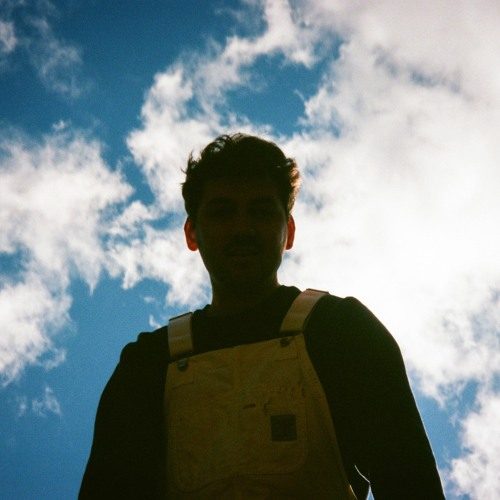An artist’s combination of talent, passion, and vision has often been called a gift.
There are times, though, when this “gift” is experienced more as a burden, both by the artist and by their loved ones, family, and community.
“Art is not only about something. Art is something.” This Susan Sontag quote encapsulates the difference between the perspective of the artist, and the perspective of just about anyone else. Artists, of all kinds, may have messages and intention behind what they do, but a big part of what makes something art is the act of fully embracing mystery.
Most people want answers and solutions. Artists have a commitment to process, and uncertainty, and a kind of faith that there are important aspects of life that need to be explored, more than they need to be explained.
Michael Simon Armstrong’s (aka Simon XO) “Waterfront” has this conflicting set of perspectives at its heart.
…her face in tears
My first night out
She ran upstairs to smoke
Sat on the ledge
Watching for the sunrise on the rooftops…
The performer has gone out to play his music. His lover wants him at home. She doesn’t accept his dedication to his art – instead, she feels abandoned and unsupported.
“Waterfront” is pensive, sad, lonely, and lovely.
People will tell the artist that they have a gift. They don’t see the work behind the gift. Like in most crafts, if people notice the work, they usually don’t see the art; but for the art to be effortless, that invisible, behind-the-scenes work has to happen.
People make room for the art, to some extent. They will even acknowledge that the art touches and moves them. More rarely, people make space for the work that allows the art to exist. Rather than seeing the need for the work to occur, they judge the work to be unnecessary, or of less value, than being present (as they see it) for relationship, or resolving everyday concerns. An artist can feel like it’s necessary to beg for time and space, just to create the art. Art is a calling, a vocation, but practicing that art is seen, as often as not, as an intrusion or a diversion.
…a tin cup in a paved down park
Begging her for scraps as they arrive
I’ll fake it ‘til I’m someone you want
…fake it ‘til you stop saying you were never in love
The artist is portrayed a bit like a medieval monk who has taken a vow of poverty. Sure, there’s an engagement with the world around, but can it be said that someone loves an artist if the lover doesn’t understand the art that is so essential to the person?
Guess I’ll pack my bag
My only one
The one with holes, headphones falling out the bottom
She said there’s no
Reason to rush
But when have I ever stayed for anyone?
He makes an effort to try to understand, to try to resolve the relationship.
So I spoke to my friend back home…
(She) said I always put myself
Ahead of everyone else
It cut me down to the goddamn bone
It seems like, when he reaches out to his long time community, they, too, see his pursuit of his art as a form of selfishness. They see his art as superfluous, not as something essential to who he is, and certainly not a significant contribution to themselves. Since they are his long-time community, and they answer his calls and talk with him, they must see value in who he is on some level – but they don’t connect that value, or who he is, to that art which is central to his core. So where does he go now?
Yeah, I think I’ll go
To the waterfront
And search for answers until I find a drum
And I’ll sing my song…
And maybe by then I’ll finally have a heart
It shouldn’t be a zero-sum situation. There shouldn’t need to be a choice between living in community, and pursuing your art. Sometimes, it feels like that’s the choice that needs to be made. And that’s what makes this song so compelling: the artist goes down to the waterfront – to the open space, where people meet, and where new journeys begin.







